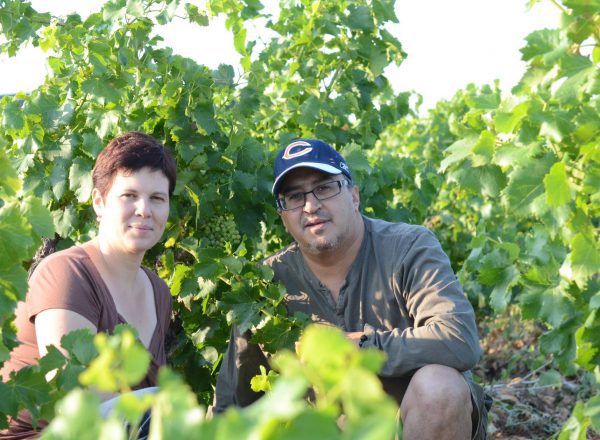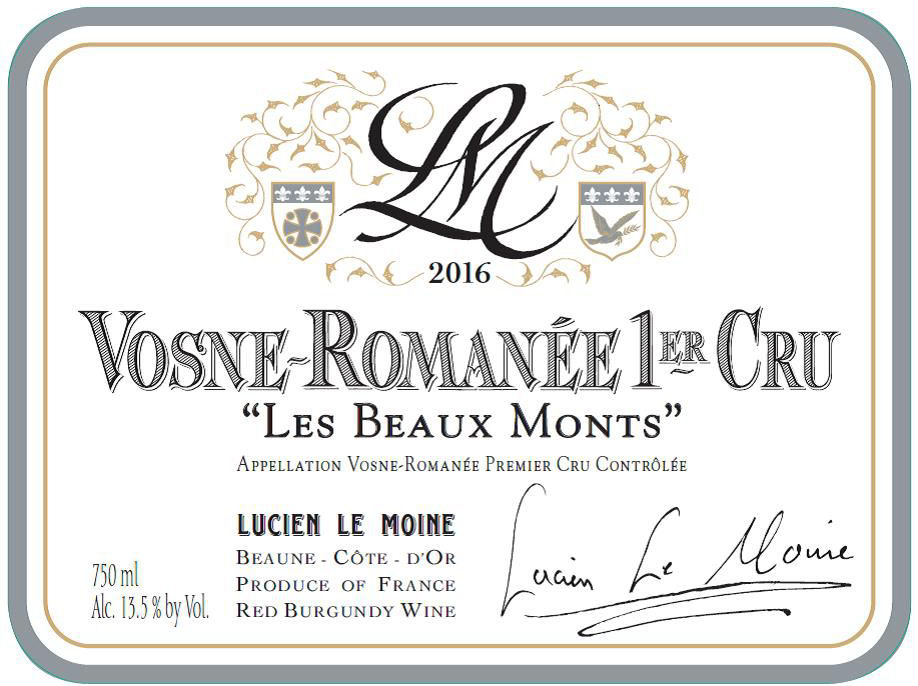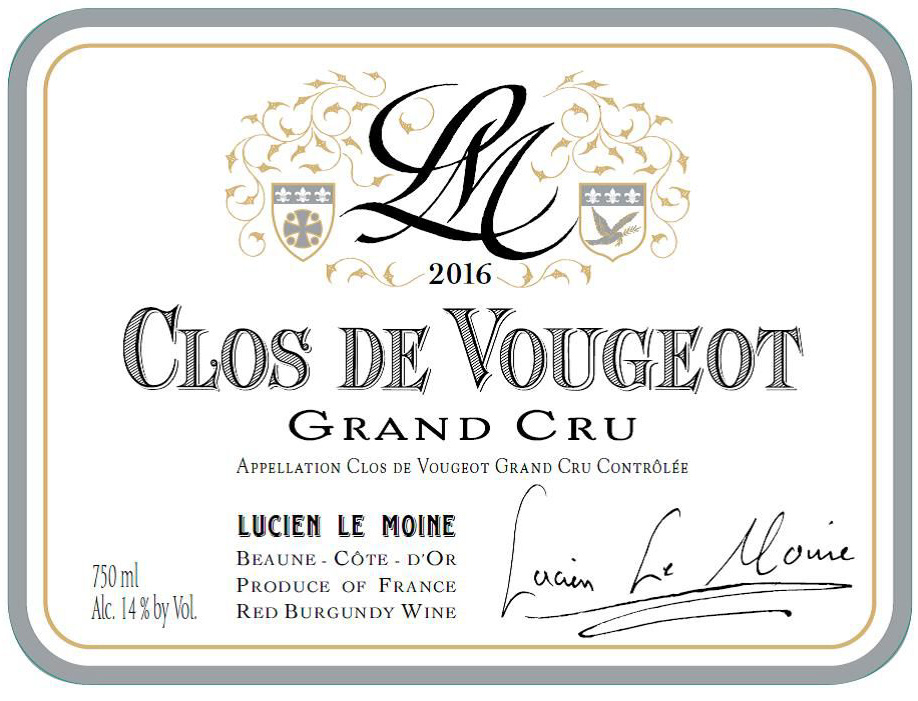
Lucien Le Moine
Clos de Vougeot Grand Cru 2016
Clos de Vougeot Grand Cru
The largest Grand Cru in the Côte-de-Nuits, at 125 acres, Clos de Vougeot possesses differing soil structures and expositions and, notably, a large number of growers. The top of the vineyard features soils of pebbly limestone, which become marl further down the slope, and finally more alluival at the 23 bottom. Notoriously variable, from the best producers Clos de Vougeot produces generous, complex wines that can stand alongside any Grand Cru Burgundies.
Color
Red
Appellation
Clos de Vougeot Grand Cru
Reviews

Burghound - November 2, 2018 “This is very ripe, indeed to the point where the cassis, warm earth and softly floral-scented aromas exhibit hints of mocha. In much the same fashion as the Clos St. Denis there is a relatively sleek mouth feel to the solidly intense and muscular larger-scaled flavors that possess a lovely sense of harmony and excellent complexity on the lingering finish that is a bit less youthfully austere than usual.”

Vinous - November 2, 2018 “Good dark red. Sexy dark berries and musky black cherry on the nose. Juicy and imploded on the palate. with its dark berry and smoke flavors communicating a rather cool character and little in the way of easy sweetness. Showing a bit less energy in the early going than the Clos Saint-Denis. Saouma says the fatness comes from the top of the Clos, and the coolness from the bottom. One of the most austere of these 2016s today; am I underrating this wine’s complexity?”
Trade Materials
Other Wines by this Producer
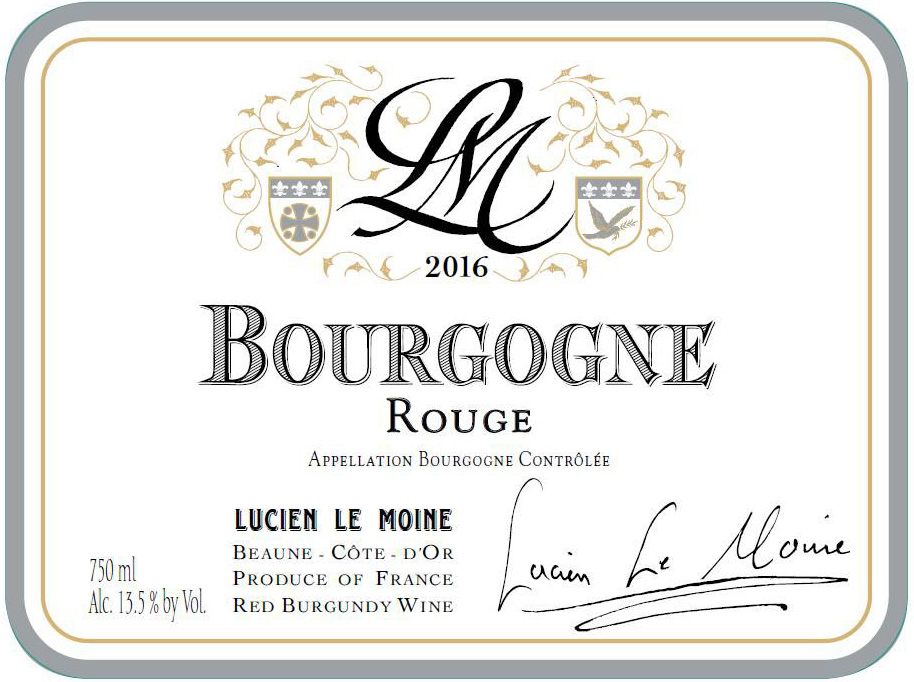
Bourgogne Rouge
Bourgogne Rouge
This wine features Givry fermented by carbonic maceration, Hauts Côte de Nuits, some beautiful Cte de Nuits village, Fixin, Marsannay, and Pernand. Both the Bourgogne red and white spend a full 2 years in barrel, with some Premier and Grand Crus even bottled before them.
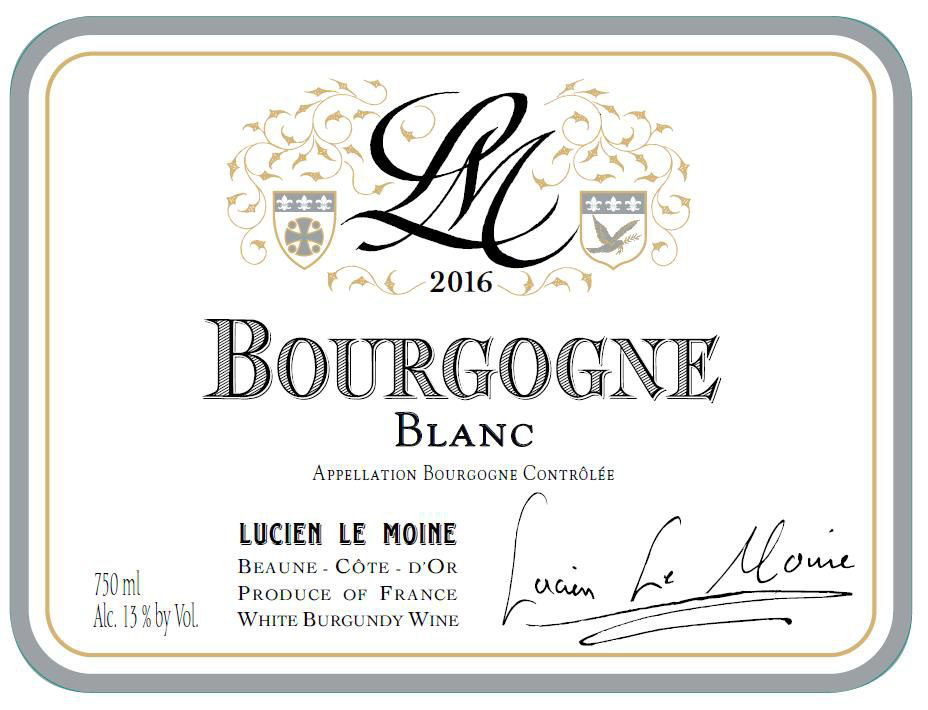
Bourgogne Blanc
Bourgogne Blanc
A blend of Rully Premier Cru, Marsannay white, Monthelie, Pernand Vergelesses, and Bourgogne from Meursault. Also, since the 2014 vintage, old vine Pouilly-Fuisse aged in new barrels.
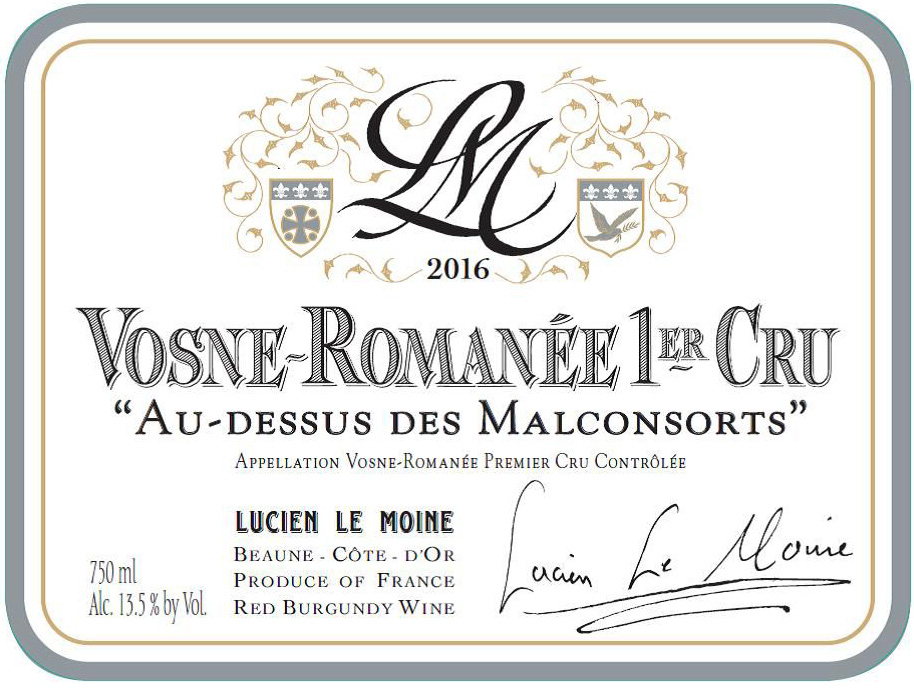
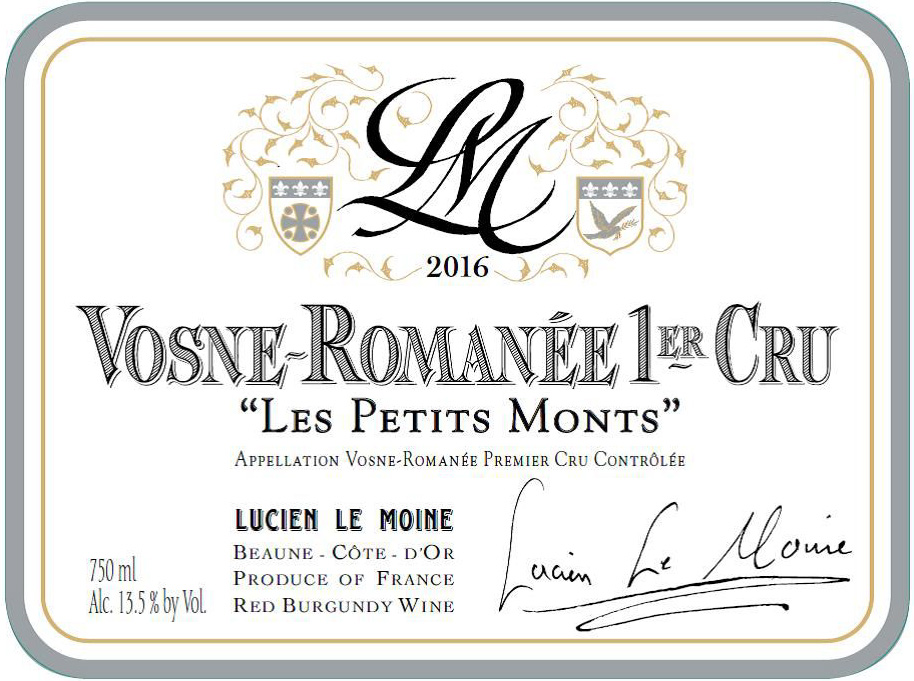
Vosne-Romanée 1er Cru “Les Petits Monts”
Vosne-Romanée 1er Cru “Les Petits Monts”
Les Petits Monts is a small, 9 acre vineyard just up-slope from Richebourg. Mounir Saouma says about Les Petits Monts that it is not far from Les Suchots, and on top of Richebourg, with a poor, dry soil. It is in character the opposite of Les Suchots, which is colored and tannic - it is a subtle and very fine wine, which shows little tannin, more floral notes and more of a St-Vivant character.
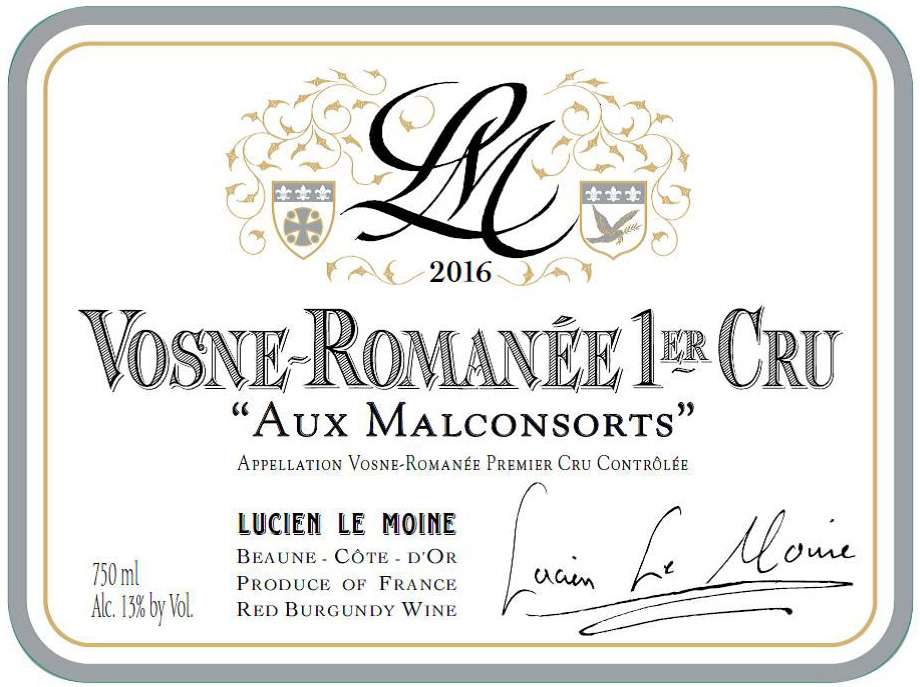
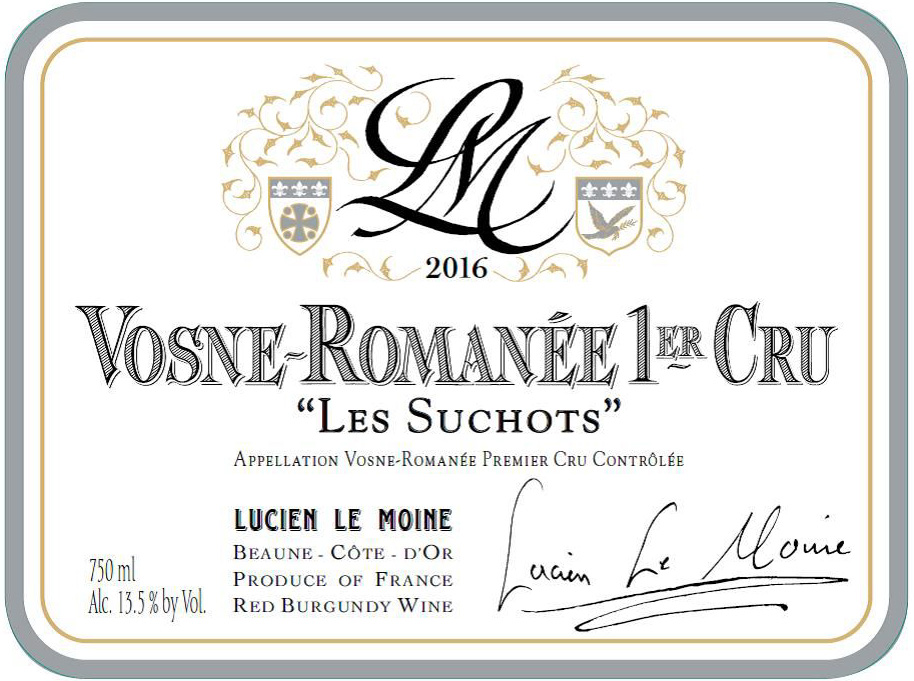
Vosne-Romanée 1er Cru “Les Suchots”
Vosne-Romanée 1er Cru “Les Suchots”
Les Suchots is one of Lucien Le Moine’s finest Crus every year. Mounir says that, like Échézeaux, there is an almost Syrah-like character of licorice and smoke. Les Suchots is a wine with a lot of tannin and less of a classic, delicate Burgundian profile.
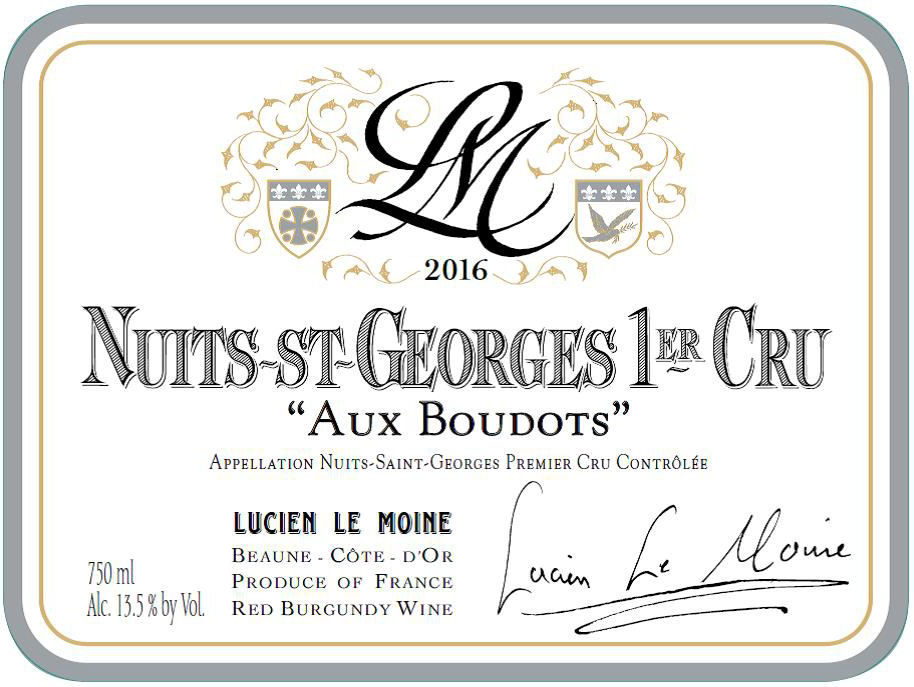

Nuits-St-Georges 1er Cru “Les Vaucrains”
Nuits-St-Georges 1er Cru “Les Vaucrains”
The commune of Nuits-Saint-Georges is the southernmost commune of the Côte de Nuits, and includes, from a viticultural standpoint, the small adjoining commune of Prémeaux-Prissey. There are 431 acres of vineyards which take this appellation at the village level, of which 29 are in Prémeaux. Of the 1er Cru vineyards, numbering 36, 28 vineyards occupy 248 acres in Nuits-Saint-Georges; the remaining eight, in Prémeaux, cover 104 acres. The Les Vaucrains is a vineyard of 15 acres lying upslope at 260-280 meters in the south part of Prémeaux.
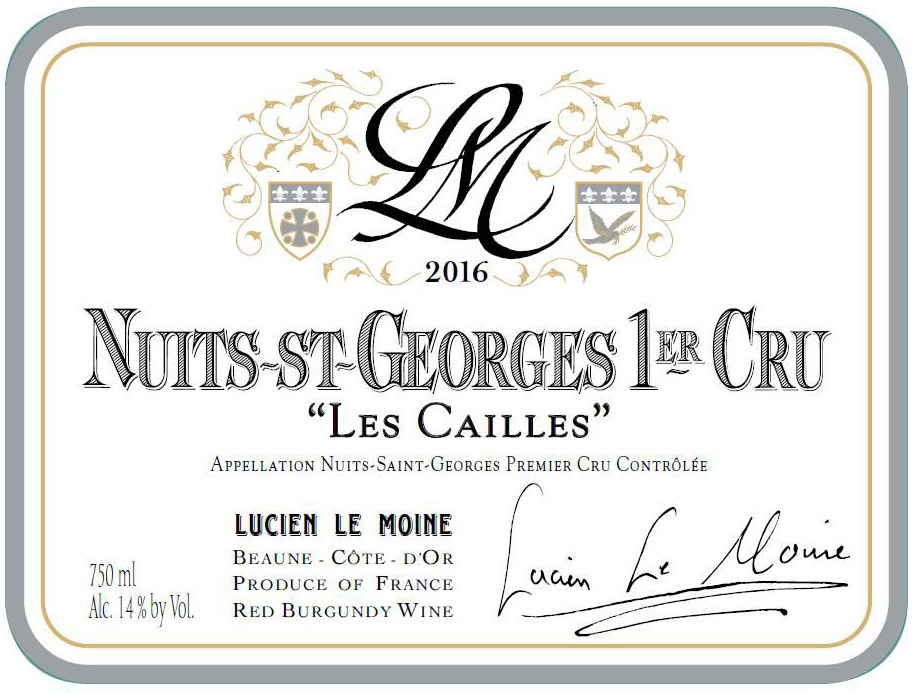
Nuits-St-Georges 1er Cru “Les Cailles”
Nuits-St-Georges 1er Cru “Les Cailles”
The Les Cailles is an 18 acre vineyard from which the last several years Lucien Le Moine has produced wines of surprising power that still retain the elegance of Les Cailles. Les Cailles, Mounir Saouma says, is deeper than other Nuits-Saint-Georges 1er Crus, with more body and more tannin. It is dense, and the heat of the vineyard gives a “charred” character to the wine - it becomes clear that this character is the wine’s (and not from oak) when you come to the finish, which is purely fruit. It is clear why some consider it a Grand Cru level vineyard.
